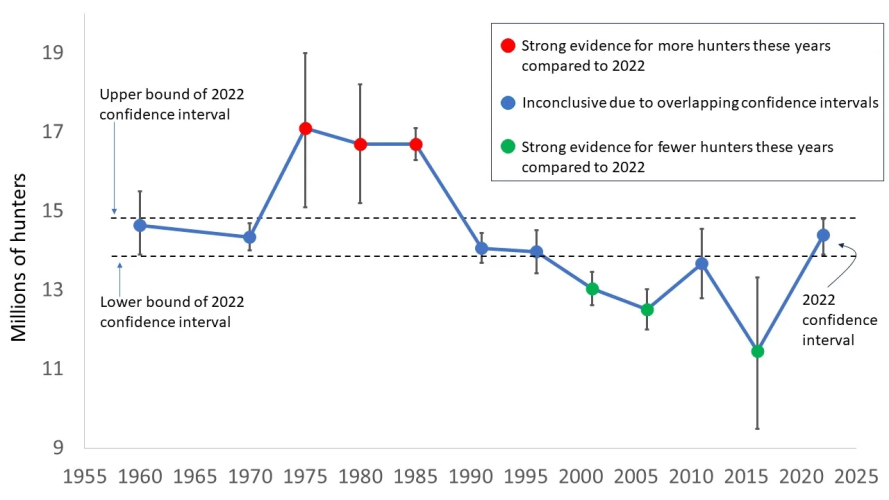lastlight
Well-known member
This seems to be said on a regular basis within the hunting community, but is it accurate? Not according to the USFWS annual reports.
This graph demonstrates that other than a 10 year blip between 1975 and 1985 hunter numbers might be higher than ever. At the same the acres of huntable land (especially non paid, publicly accessible) have been on the decline.

FYI this survey data can be found here https://www.fws.gov/program/national-survey-fishing-hunting-and-wildlife-associated-recreation-fhwar
I see the arguement that, as a percentage of the US population, hunters may be on the decline. I also think there is so many variables between states and licenses sold. Are lifetime licenses counted each year? Are there more big game hunters now than small game? etc.
Then there is the Andrew McKean (who is an R3 advocate) Outdoor life article on how we have no idea how many hunters there actually are in America.
So where does the "We need more hunters" and "Hunter numbers are down" sentiment come from?
This graph demonstrates that other than a 10 year blip between 1975 and 1985 hunter numbers might be higher than ever. At the same the acres of huntable land (especially non paid, publicly accessible) have been on the decline.

FYI this survey data can be found here https://www.fws.gov/program/national-survey-fishing-hunting-and-wildlife-associated-recreation-fhwar
I see the arguement that, as a percentage of the US population, hunters may be on the decline. I also think there is so many variables between states and licenses sold. Are lifetime licenses counted each year? Are there more big game hunters now than small game? etc.
Then there is the Andrew McKean (who is an R3 advocate) Outdoor life article on how we have no idea how many hunters there actually are in America.
So where does the "We need more hunters" and "Hunter numbers are down" sentiment come from?





